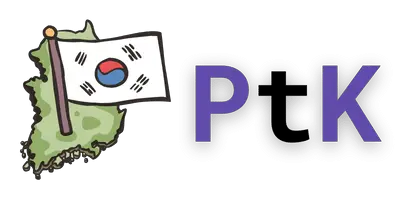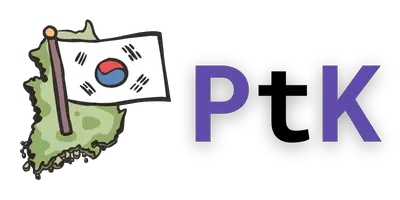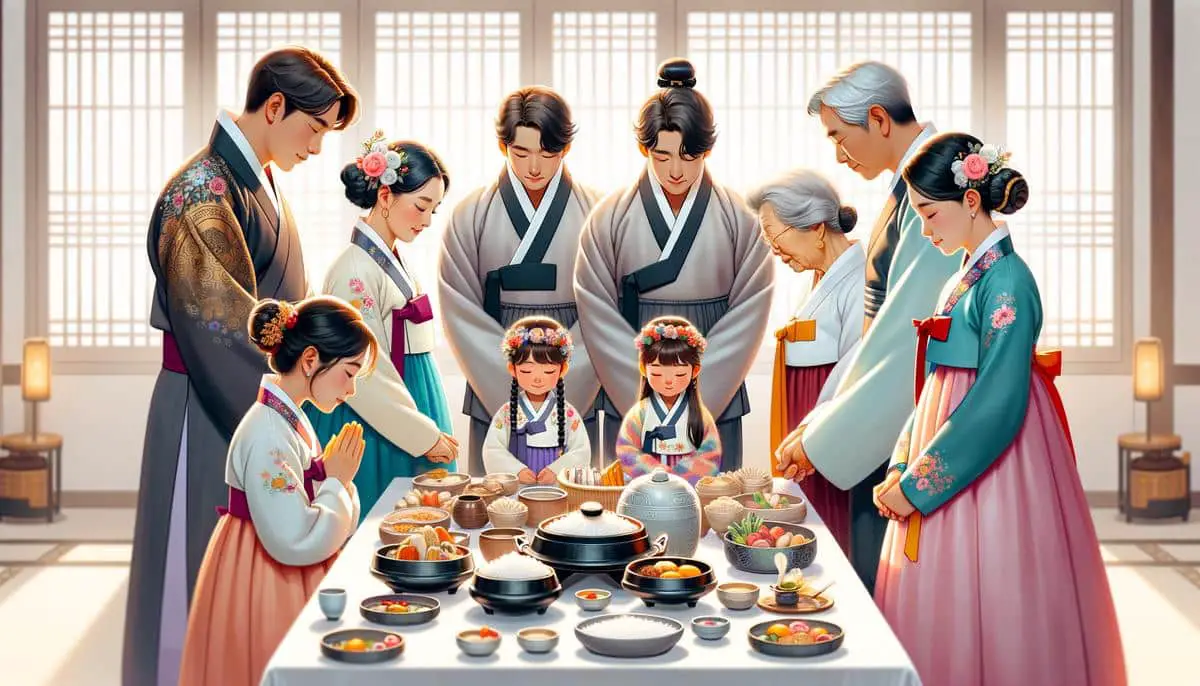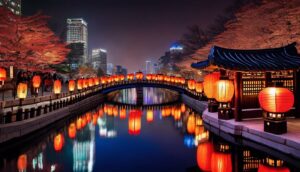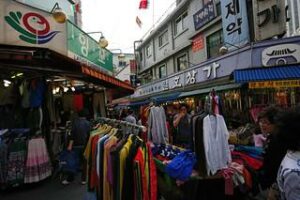Exploring the rich tapestry of Korean ancestral rites, we embark on an exploration of Jesa, a tradition that binds families and honors the legacy of ancestors. This tradition is not just about remembering those who have passed but is a celebration that strengthens family bonds and reflects deeply held cultural values. As we unfold the layers of Jesa, Charye, Seongmyo, and Beolcho, we discover how these practices are more than rituals; they are a testament to the enduring spirit of respect and unity within Korean culture.
Understanding Jesa
Jesa: A Glimpse into Korean Ancestral Rites
Diving straight into the heart of traditional Korean culture, Jesa stands out as one of those age-old ceremonies that, like the threads in a beautifully woven hanbok, stitches family and tradition tightly together. Understanding Jesa throws light on more than just a ritual; it’s about peeking into what keeps the Korean spirit so grounded and unified. So, let’s walk through what Jesa is and unwrap its layers of significance in maintaining lineage, harmony, and the undying reverence for Confucian values.
At its core, Jesa is a commemorative ceremony, steeped in tradition, performed to honor ancestors. It might seem like another family gathering, but it’s so much more. It’s about paying respects, remembering the lives, and celebrating the legacies of those who came before us. It echoes the Confucian principle of filial piety – a fundamental value driving respect and reverence for one’s parents and ancestors in Korean culture. From a Western perspective, think of Jesa as Thanksgiving, but with a deeper solemn note to it, revolving solely around honoring past generations.
The origins of Jesa trace back centuries, showcasing how entrenched it is in Korean society. My granny used to share stories handed down from her mother, painting vivid pictures of the past when Jesa was as ingrained in daily life as sunrise and sunset. Through these tales, I learned the significant role Jesa played not just in keeping the memory of ancestors alive but also in establishing a moral code of gratitude and respect within the family.
Why does Jesa matter so much, though? Beyond the traditional rituals, Jesa serves as a vinculum, pulling together scattered family members into one fold. In today’s world where family feasts may often be replaced by quick texts or social media updates, Jesa pulls the brakes on the fast life. It gently reminds everyone to sit down, pour a drink for the foregone, set a plate for the past, and share stories under the subtle gaze of ancestral portraits. It’s about grounding oneself in the roots that bore fruits to the present.
Moreover, Jesa keeps the family lineage alive. In the cryptic complexity of modern life, it’s easy to lose track of one’s heritage. Through Jesa, families take a moment to trace back their lineage, often leading to fascinating stories from the past, filled with valor, sacrifice, and undying love. For example, I once discovered that my great-great-grandfather was a respected scholar and played a significant role in the local protests against colonial rule. If not for Jesa, such inspirational snippets from history would have been lost in time.
Apart from maintaining lineage and family unity, Jesa underscores the deep-rooted Confucian values in Korean culture. Respect for elders isn’t just taught; it’s beautifully woven into the very fabric of Korean life through such ceremonies. It’s a living example setting a constant reminder of one’s roles and responsibilities towards both the living and the departed members of the family.
The beauty of Jesa also lies in the ritualistic specifics – the meticulous preparation of traditional dishes, setting the jesa table with precision, and the bowing protocol. Each step is endearing and brings forth a sense of belonging and peace that’s hard to find in any other practice. My family’s Jesa gatherings are always filled with both solemnity and warmth, a time when generations collide and merge in memory and spirit.
In wrapping up this peep into what Jesa encapsulates, it’s apparent how this tradition cradles not just memories but bolsters familial and societal values. The essence of Jesa goes beyond just performing rites; it stands as a testimony to the unbroken chain of life, reverence for forebearers, and the seamless synthesis of tradition in the rhythm of Korean life. The cohesion and respect it fosters within families make it an irreplaceable facet of Korean heritage. Indeed, Jesa is a bridge to the past, nurturing an unspoken but profoundly felt connection across generations.
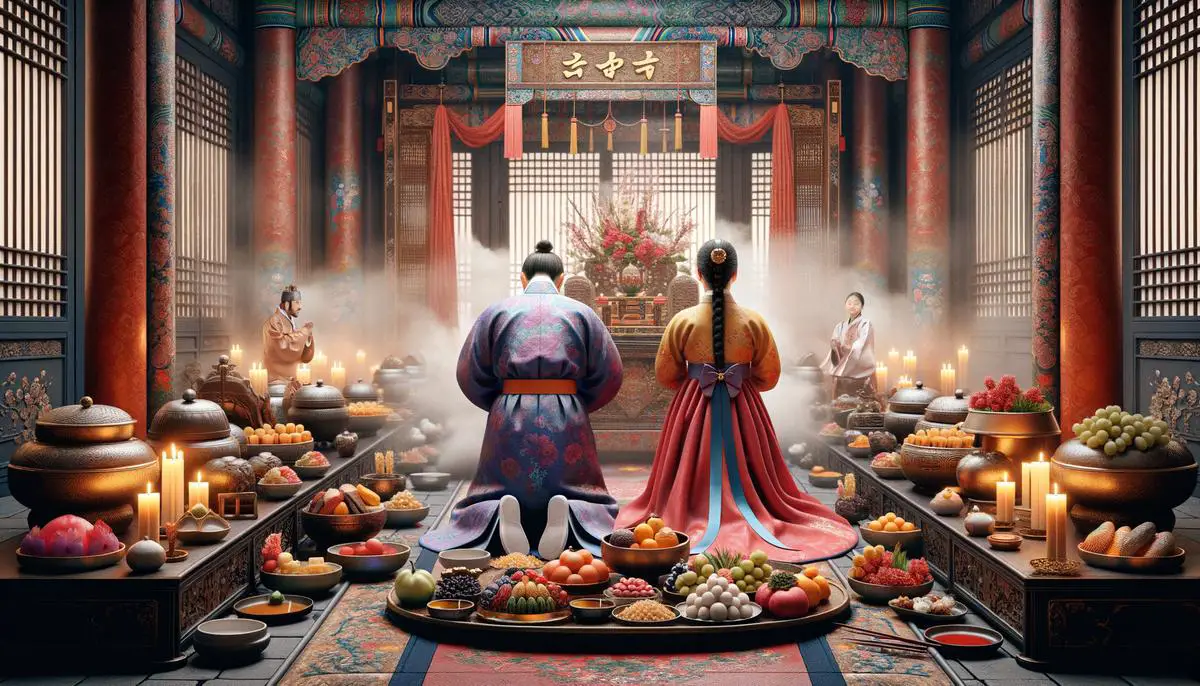
The Rituals of Charye
Diving right into the heart of Charye, this ceremony isn’t just about laying out dishes on a table; it’s a heartfelt expression of gratitude and remembrance for those who walked the path before us. Imagine a room filled with the aroma of specially prepared foods, each item carrying a slice of history and symbolism that’s as rich as its taste.
The first thing you’d notice about Charye is how the table is set up. It’s not random. From the rice and soup placed on the north side of the table to the fish and meat on the south, every dish has its designated spot, creating a map of flavors and meanings. This meticulous arrangement isn’t about culinary aesthetics but speaks to a structure that honors balance and harmony, reflecting the universe’s natural order.
Picture this: The east side greets the sunrise with fresh vegetables, while the west side holds the savory japchae (stir-fried glass noodles with vegetables), symbolizing a connection between sun and earth, light and life. At the core of it all, rice and soup anchor the spread, embodying sustenance and comfort, essential elements for life’s journey.
Before the ceremony starts, there’s a palpable shift in the air—a mix of solemnity and warmth as family members don their hanbok, stepping not just into traditional attire but into a realm connecting them to ancestors. As they gather around the table, silence envelops the room, replaced soon by a recitation of names and titles, a roll call across generations that reverberates against the walls, bridging worlds.
Bowing comes next. It’s not simply a motion; it’s an art form, a physical manifestation of respect and humility. The sequence matters: the eldest male family member leads, with others following, synchronizing their movements in a dance choreographed by tradition. These bows aren’t just dips of the head but full-body gestures that seem to say, “We are because of you.”
Now, let’s talk about the food. Every dish served during Charye isn’t chosen at random; it’s an edible lexicon of symbolism. The freshness of the fruits represents purity and the hope for a prosperous lineage. The fish, perfectly set on the table, speaks to abundance and fertility, while the meats convey strength and resolution. Every bite taken and every flavor savored during Charye transcends mere nourishment, feeding not just the body but the soul, connecting us to roots that run deep beneath the soil of our existence.
Personal stories interwoven through the preparation and participation in Charye intensify this connection. There’s Auntie Mina, who recounts tales of Great-Grandpa’s heroics with every slice of radish she places on the table, or cousin Jay, who finds solace in meticulously preparing the sikhye (sweet rice drink), a task once undertaken by a grandmother he barely remembers. These stories aren’t just fillers; they’re threads in a tapestry of collective memory, painting a family’s portrait with strokes of love, loss, resilience, and reunion.
As the ceremony concludes and the food, once intended for ancestors, is shared among the living, it’s a testament to life’s cyclical nature. Charye then becomes more than a rite; it’s a reaffirmation of life, where eating transforms into an act of communion with the past, and the present coalesces with the yesterdays in a harmonious blend.
So, amidst the laughter and clatter that follows the ceremony, beneath the catch-up chats and playful jests, there’s a profound sense of continuity and belonging. As we navigate our hurry-up lives, Charye acts as an anchor, reminding us that we stand on shoulders of giants, upheld by bonds that neither time nor distance can fray.
In the end, Charye isn’t just about remembering those who have passed; it’s a celebration of life – theirs, ours, and those yet to come. It’s a vivid mosaic of love and heritage, an intricate dance of flavors, stories, and spirits that enriches not just our tables but our very beings.
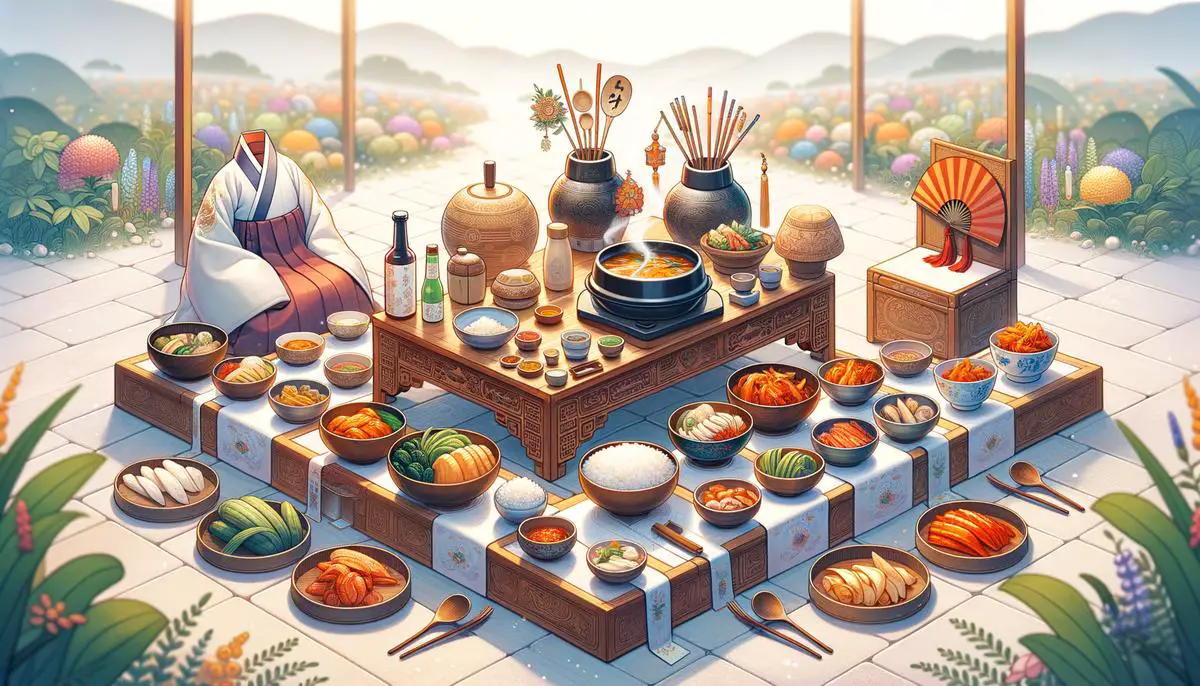
Seongmyo and Beolcho: Visiting Graves
Now, turning our attention to Seongmyo and Beolcho, let’s dive into these heartwarming traditions that further deepen our connection to our ancestors. While Jesa and Charye bring families together in a moment of solemn gratitude and remembrance, Seongmyo and Beolcho are the physical manifestations of our ongoing respect and care for those who have passed. These rituals aren’t just about maintaining the graves; they’re deeply personal journeys that tug at the heartstrings, reminding us where we come from and the lineage we carry forward.
Embarking on Seongmyo, the annual visit to the graves of our ancestors, is more than a mere tradition. It’s a day that many of us mark on our calendars, not out of obligation, but out of a deep-seated need to feel close to those who shaped our past. This journey, often taken during the Tomb-Sweeping Day or Chuseok, sees families laden with offerings, leaving the hustle and bustle of city life behind to navigate the serene paths that lead to their ancestors’ resting places.
The air during Seongmyo carries a quiet reverence, punctuated by the sounds of nature and the gentle murmur of family members recounting tales of the dearly departed. Offerings are carefully laid out—fruits, rice wine, and favorite dishes of ancestors—as prayers are softly spoken, connecting us across time and space to the loved ones we miss so dearly.
Beolcho, the act of tending to the graves, sees families armed with gloves and gardening tools, ready to pour love and care into the soil that surrounds their ancestors. It’s humbling work, clearing away weeds and debris, ensuring that the final resting places of our forebears are as well-kept as our homes, reflecting our respect and eternal love. Watching as a once-overgrown grave becomes neat and cared for under one’s hands inspires a quiet reflection on the fleeting nature of life and the enduring strength of family bonds.
What strikes me the most about Seongmyo and Beolcho is their ability to bridge past with present. It’s a tangible connection, one that goes beyond stories and into the realm of physical touch—the feel of the earth under your fingers as you care for a grave, the texture of flowers you place by the headstone. These moments ground us, reminding us of who we are and to whom we owe our heritage.
Moreover, these practices highlight the Korean emphasis on filial piety and familial duty. They serve as a reminder that even in death, our loved ones are never truly apart from us. Each weed pulled, each prayer offered, ties us more closely to them, fostering a sense of continuity and belonging. Through these acts, we reaffirm our identity as part of a lineage that stretches back centuries.
In today’s fast-paced world, where moments flit by unnoticed, Seongmyo and Beolcho call us to pause, to reflect on our roots, and to cherish the notion that in tending to our ancestors’ graves, we keep their memory alive in the most beautiful way possible. It teaches us that love, respect, and remembrance transcend the boundary of life and death. And in this way, we carry forward the torch of our family’s legacy, ensuring that those who came before us continue to live on in the stories we tell and the traditions we uphold.
Through personal reflections on these rituals, I’ve come to understand their emotional and spiritual significance. They are not mere rites to be observed; they are expressions of love and gratitude that bind families together—across generations, beyond death—creating an everlasting bond with our ancestors.
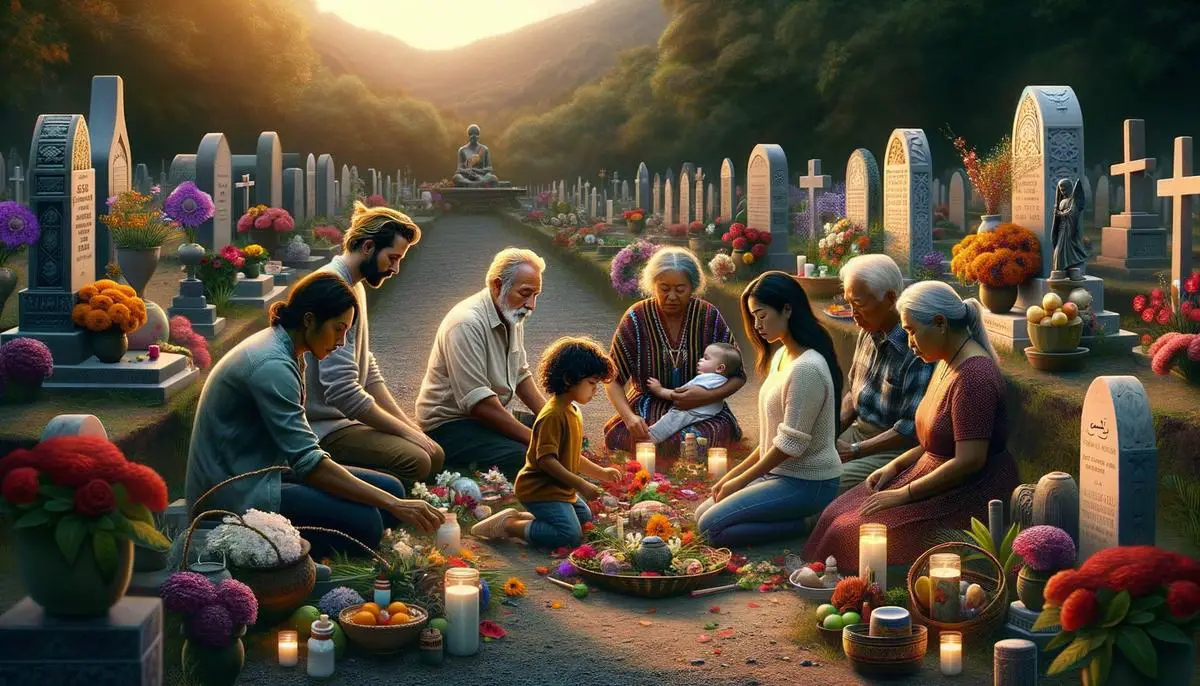
Modern Adaptations of Memorial Rituals
As times change and societies evolve, so too does the way we commemorate and honor our ancestors. The faced-paced lifestyle of contemporary urban life, along with advancements in technology, have led to modifications in how traditional Korean memorial rituals like Jesa, Charye, Seongmyo, and Beolcho are observed. Despite these changes, Korean families are finding innovative ways to ensure that these traditions continue to foster a sense of belonging and respect for their ancestors.
Let’s start by looking at the adaptation of these practices in the context of modern family dynamics. With family members often living apart due to job opportunities or educational pursuits, gathering for traditional memorial rituals becomes challenging. However, rather than letting these practices diminish, families now often schedule Jesa or Charye ceremonies during national holidays or weekends, ensuring the participation of as many members as possible. This adaptation not only keeps the tradition alive but also reiterates the importance of family unity and honoring ancestors.
The inclusion of technology in these age-old practices is arguably the most remarkable change. Digital platforms and apps specifically designed for organizing Jesa ceremonies are gaining popularity among younger generations. These tools help in planning the ceremonies, from arranging the necessary offerings to providing guidelines on conducting the rituals correctly. Some families even participate in these ceremonies virtually when physical presence is impossible, a clear reflection of how deeply ingrained these traditions are, that families go to great lengths to ensure their continuity.
Speaking of younger generations, their engagement and perception towards these memorial rituals is noteworthy. In a world that’s rapidly modernizing, you might expect a decline in interest or participation. However, many young Koreans are taking a proactive approach by learning the significance and procedures of these rituals from their elders. They view it as a means to connect with their roots and understand their identity better. It’s not merely about following routines but appreciating the values and stories embedded in these traditions.
Moreover, the creative integration of contemporary elements into these rituals showcases a blend of respect for tradition with modern sensibilities. For instance, while traditional dishes remain an integral part of Charye, some families have begun to include modern or simplified versions of these meals to accommodate the taste and convenience of younger members. This fusion approach ensures that the essence of the ritual is maintained while making it more relatable and accessible to all family members.
There’s also a renewed focus on educating the youth about the environmental aspect of Seongmyo and Beolcho. Families are increasingly discussing the importance of ecological conservation within the context of these rituals. Tending to ancestors’ graves goes beyond clearing weeds and is increasingly about preserving the natural surroundings, reflecting a broader responsibility towards both ancestral respect and environmental stewardship.
In essence, the adaptation of traditional Korean memorial rituals to contemporary life underscores a dynamic interplay between preserving heritage and embracing change. It reflects a societal commitment to ensure that the respect for those who came before us withstands the test of time, even as we navigate through an ever-changing world. Through these transformations, the core values of gratitude, respect, and family unity remain unaltered, making these rituals not only a bridge to the past but a foundation for future generations.
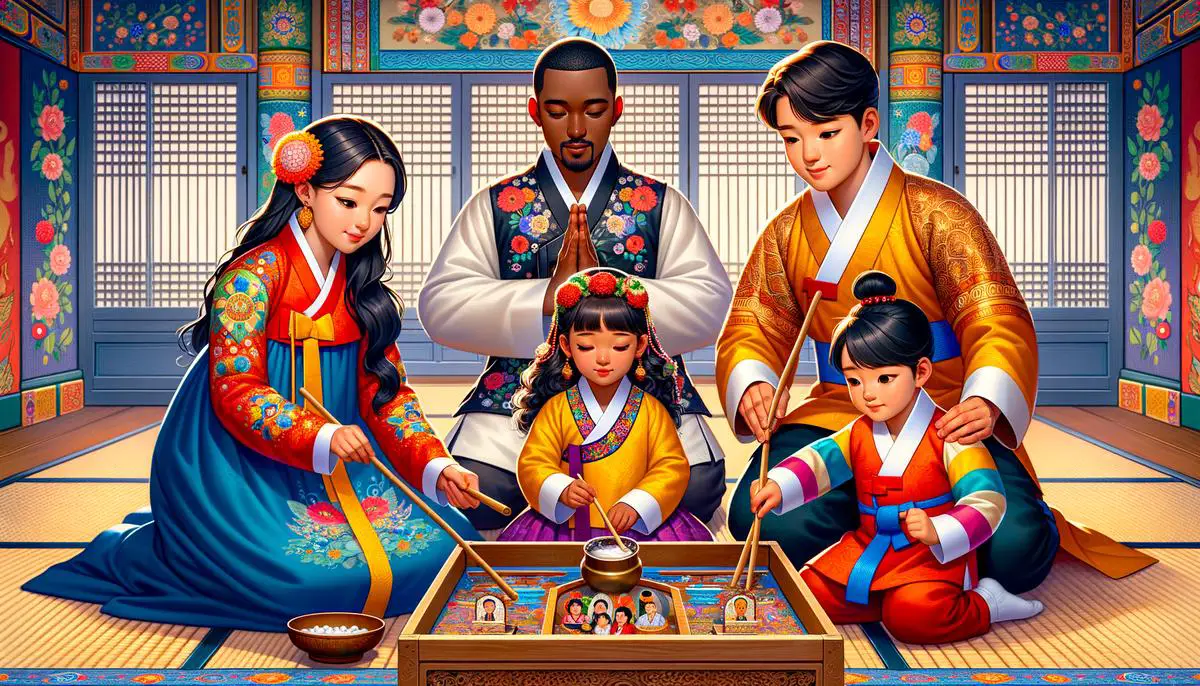
As we reflect on the significance of traditional Korean memorial rituals in contemporary society, it’s clear that these practices are not relics of the past but living traditions that continue to evolve while maintaining their core essence. They serve as a vibrant reminder of our connections to our ancestors and to each other. By adapting to modern life yet holding onto their profound meanings, these rituals ensure that future generations will carry forward the legacy of respect for family history and cultural heritage. Through this enduring commitment to honoring our ancestors, we affirm our identity and strengthen ties that bind us across time.
